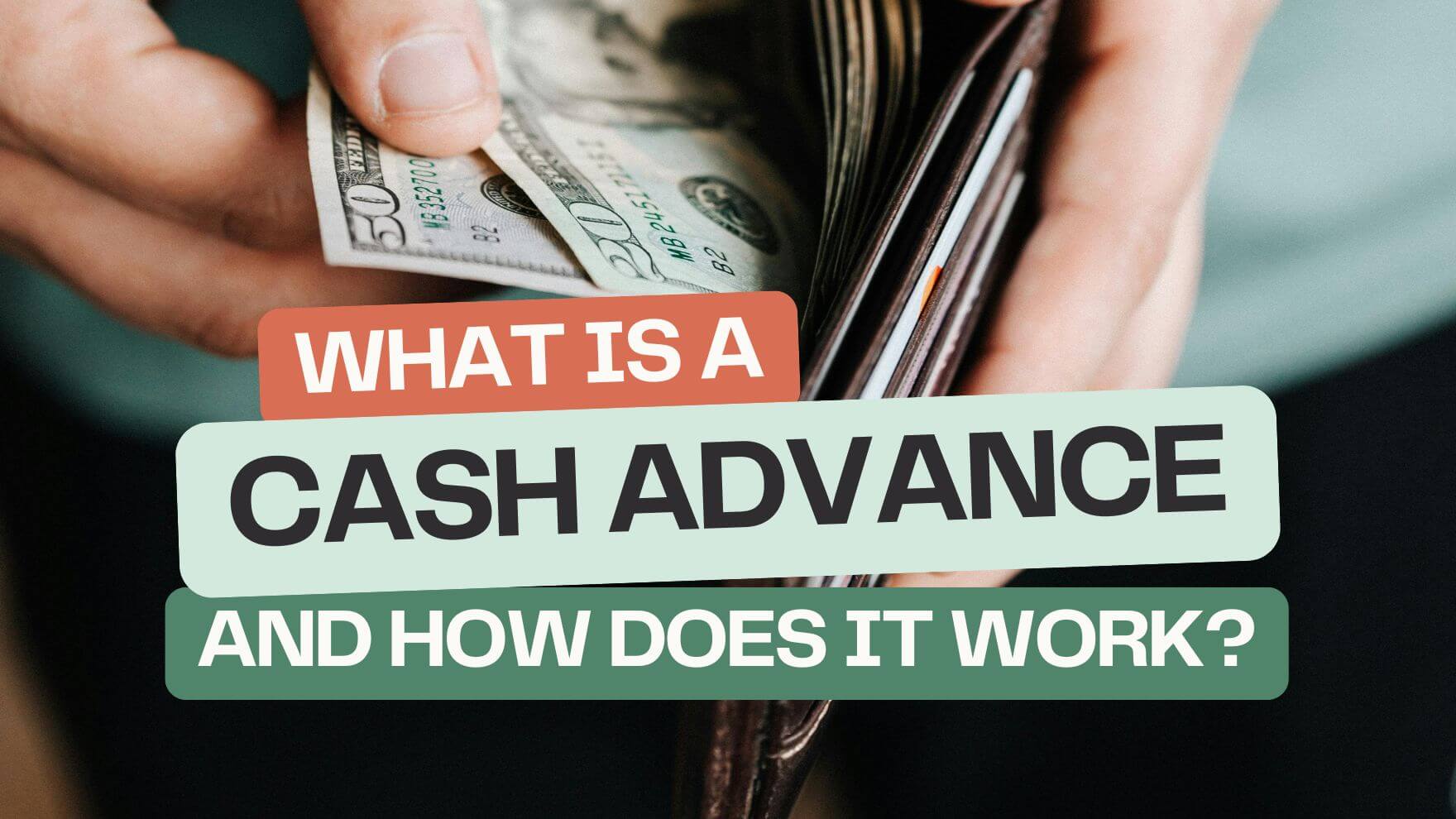If you're ever in a financial pinch and need quick access to cash, you may find yourself considering using the cash advance feature on your credit card. While it may seem like an easy solution, there are significant drawbacks to consider. In this post, we'll explain what a cash advance is, how it works, and its pros and cons. We'll also discuss why you should think twice before turning to a cash advance as a financial solution.
What is a Cash Advance?
A cash advance is a service provided by credit card companies that allows you to withdraw cash against your credit card's line of credit. Instead of swiping your card for a purchase, you get actual cash, which you can use for anything from paying rent to handling unexpected expenses, like purchasing pricey electronics for that new apartment you just moved into.
However, while cash advances are convenient, they come with hefty fees and interest rates that make them an expensive way to borrow money.
How Does a Cash Advance Work?
A cash advance can be obtained in three main ways:
- ATM Withdrawal: You can withdraw cash using your credit card at an ATM, similar to how you'd use a debit card. You'll need your credit card's PIN to do this.
- Bank Withdrawal: You can visit a bank that works with your credit card network (such as Visa or MasterCard) and request a cash advance over the counter.
- Convenience Checks: Some credit card companies offer “convenience checks,” which are checks you can write against your credit card balance. You can deposit or cash these like a regular check.
Once you’ve withdrawn the money, the cash advance amount is added to your credit card balance, but with a few key differences compared to regular purchases.
The Cost of a Cash Advance
Cash advances often come with a variety of fees and costs that make them more expensive than using your card for regular purchases. Here’s a breakdown of the main costs:
- Cash Advance Fee: Most credit card issuers charge a cash advance fee, which is typically 3% to 5% of the amount withdrawn. For example, if you take out a $500 cash advance, you might pay a fee of $15 to $25.
- Higher Interest Rates: Cash advances usually have a higher interest rate than regular credit card purchases. While the average APR for purchases might be around 15% to 25%, cash advance rates can be much higher—sometimes exceeding 30%.
- Interest Starts Immediately: Unlike regular credit card purchases, where you have a grace period before interest starts accumulating, cash advances begin accruing interest immediately, the moment you take out the money.
- ATM Fees: If you use an ATM to withdraw cash, you’ll likely face an additional ATM fee, often ranging from $2 to $5, depending on the ATM provider.
Pros of Using a Cash Advance
While a cash advance is generally not recommended due to the high fees and interest rates, there are a few situations where it might make sense.
- Immediate Access to Cash: A cash advance provides quick and easy access to cash when you’re in a tight spot, and you don’t have immediate access to savings or other financial resources.
- No Approval Needed: Unlike a loan application, there’s no approval process involved. If you have a credit card and available credit, you can take out a cash advance without waiting for approval.
- Flexibility: You can use the cash for anything you need, whether it's an unexpected bill, medical expense, or emergency travel.
Cons of Using a Cash Advance
While the immediate access to cash may seem tempting, the downsides of cash advances usually outweigh the benefits. Here’s why:
- High Fees and Interest: Cash advances are expensive. Between the high APR, cash advance fees, and ATM fees, the cost of borrowing can add up quickly. Even small cash advances can result in significant debt if not paid off promptly.
- No Grace Period: Unlike regular credit card purchases, there’s no grace period on a cash advance. You’ll start accruing interest from day one, which means even if you pay it off within a few weeks, you'll still owe interest on the amount.
- Potential Debt Spiral: If you’re already struggling financially, taking out a cash advance can worsen the situation. High fees and interest make it harder to pay off the balance, which can lead to more debt down the road.
- Impacts Your Credit Utilization: A cash advance increases your credit card balance, which can raise your credit utilization ratio (the amount of credit you’re using compared to your total credit limit). A high credit utilization ratio can lower your credit score, making it harder to qualify for loans or credit cards with better terms in the future.
Why You Should Avoid Cash Advances
In most cases, cash advances are not a good financial solution. The combination of high fees, immediate interest, and no grace period makes them one of the most expensive ways to borrow money. Here are a few reasons to avoid them:
1. High Costs
As mentioned earlier, the fees and interest make cash advances extremely costly. If you’re trying to manage your finances, the last thing you need is additional high-interest debt. Ideally, you want to limit and avoid credit card debt.
2. Better Alternatives
Instead of relying on a cash advance, consider other financial solutions such as:
- Splitting purchases across multiple cards with Kasheesh.
- Personal loans: A personal loan typically has lower interest rates and structured repayment terms.
- 0% APR Credit Cards: If you're able to qualify, some credit cards offer an introductory 0% APR on purchases and balance transfers, giving you time to pay off debt without incurring high-interest charges.
- Emergency Fund: If possible, rely on your savings or emergency fund to handle unexpected expenses.
3. Long-Term Financial Impact
Cash advances can create a cycle of debt. If you're unable to pay off the balance quickly, the accumulating interest and fees will make it harder to recover financially.
Conclusion
A cash advance might seem like a quick fix when you need cash immediately, but it’s important to be aware of the long-term costs. Between the high fees, steep interest rates, and no grace period, it can quickly lead to more debt.
If you’re in a financial emergency, consider exploring other options first—whether it's dipping into your savings, negotiating with creditors, or applying for a personal loan. Cash advances should be a last resort, used only when there’s no other option. For more information on credit card mistakes to avoid, check out our post on “10 Common Credit Card Mistakes To Avoid.”




.png)










.png)










